I have a time series data that has been imported as zoo class. and my data looks like this:
# you can recreate my problem using the code below
library(rjson)
library(plyr)
library(zoo)
value <- '[["2013-08-08", 7944, 0.37], ["2013-08-09", 7924, 0.37], ["2013-08-09", 7924, 0.37], ["2013-08-10", 7895, 0.37], ["2013-08-10", 7895, 0.37], ["2013-08-11", 7895, 0.37], ["2013-08-12", 7895, 0.37], ["2013-08-12", 7895, 0.37], ["2013-08-13", 8087, 0.37], ["2013-08-13", 8087, 0.37], ["2013-08-14", 8081, 0.37], ["2013-08-14", 8081, 0.37], ["2013-08-15", 8016, 0.37], ["2013-08-15", 8016, 0.37], ["2013-08-16", 7991, 0.37], ["2013-08-16", 7991, 0.37], ["2013-08-17", 7969, 0.37], ["2013-08-17", 7969, 0.37], ["2013-08-18", 7969, 0.37], ["2013-08-18", 7969, 0.37], ["2013-08-19", 7969, 0.37], ["2013-08-19", 7969, 0.37], ["2013-08-20", 3931, 0.37], ["2013-08-20", 3931, 0.37], ["2013-08-21", 3829, 0.37], ["2013-08-21", 3829, 0.37], ["2013-08-22", 3729, 0.37], ["2013-08-22", 3729, 0.37], ["2013-08-23", 3729, 0.37], ["2013-08-23", 3729, 0.37], ["2013-08-24", 3719, 0.37], ["2013-08-24", 3719, 0.37], ["2013-08-25", 3719, 0.37], ["2013-08-25", 3719, 0.37], ["2013-08-26", 3719, 0.37], ["2013-08-26", 3719, 0.37], ["2013-08-27", 7569, 0.37], ["2013-08-27", 7569, 0.37], ["2013-08-28", 7444, 0.37], ["2013-08-28", 7444, 0.37], ["2013-08-29", 7444, 0.37], ["2013-08-29", 7444, 0.37], ["2013-08-30", 7439, 0.37], ["2013-08-30", 7439, 0.37], ["2013-08-31", 7419, 0.37], ["2013-08-31", 7419, 0.37], ["2013-09-01", 7419, 0.37], ["2013-09-01", 7419, 0.37], ["2013-09-02", 7419, 0.37], ["2013-09-02", 7419, 0.37], ["2013-09-03", 7219, 0.37], ["2013-09-03", 7219, 0.37], ["2013-09-05", 7001, 0.37], ["2013-09-06", 6999, 0.37], ["2013-09-07", 2749, 0.37], ["2013-09-08", 2749, 0.37], ["2013-09-08", 2749, 0.37], ["2013-09-09", 2749, 0.37]]'
content <- as.data.frame(matrix(unlist(fromJSON(json_str=.value)),ncol=3,byrow=TRUE))
names(content) <- c('date', 'inStock', 'unitPrice')
content$date <- as.POSIXct(content$date, format="%Y-%m-%d")
content$inStock <- as.integer(levels(content$inStock))[content$inStock]
content$unitPrice <- as.numeric(levels(content$unitPrice))[content$unitPrice]
content <- ddply(content, .(date), summarise, inventoryValue = max(inStock) * min(unitPrice), inStock = max(inStock), unitPrice = min(unitPrice))
content.zoo <- zoo(content[-1], content$date)
content.complete <- na.approx(content.zoo, xout=seq(start(content.zoo), end(content.zoo), by="day"))
plot(content.complete[,1])

You can easily see the movement of the inventory drop to 1500 at Aug 20 and the inventory got replenished at Aug 25.
How to use diff function to calculate sales, which is only the negative delta or assign all the positive delta(replenishment) to be 0
# the plot below shows all the delta but I only want the negative delta
plot(-diff(content.complete[,1]))

In a simple way. You have a vector:
a <- c(1,2,3,4,-1,-2,4,5, 0)
# how can I get
c(1,2,3,4,0,0,4,5,0)
UPDATE:
#Inspired by pmax answer, this is my final solution:
plot(zoo(pmax(0, as.vector(-diff(content.complete[,1]))), seq(start(content.complete), end(content.complete), by="day")))